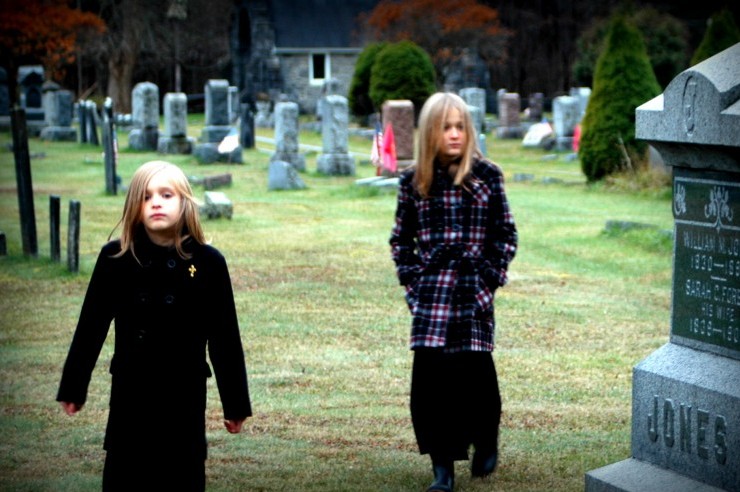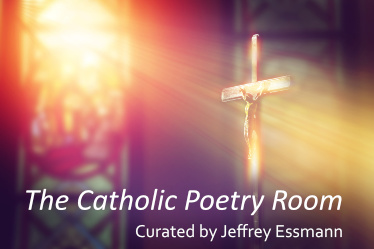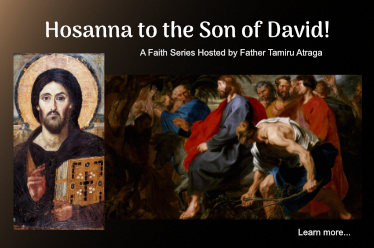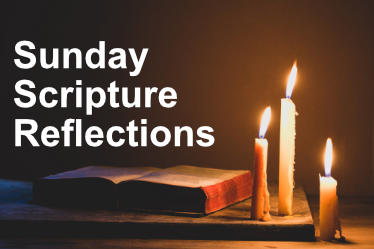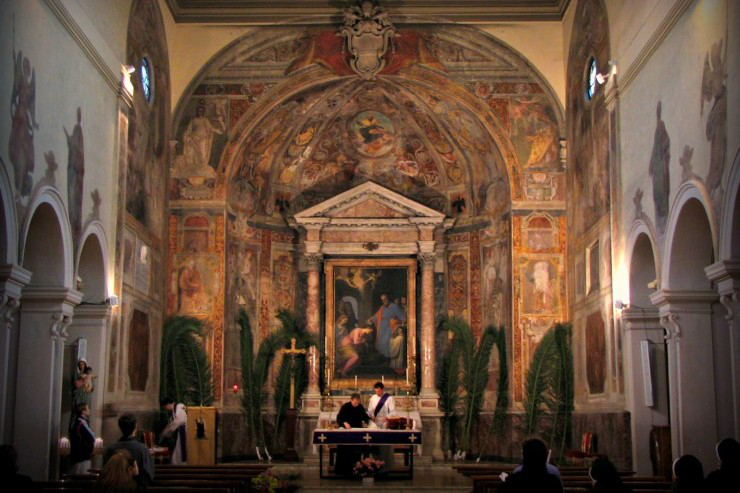 One of the oldest traditions of Lent is the pilgrimage to the Roman station churches. The station churches, or statio, have their roots in the earliest days of the Church, when the bishop would visit the churches of his diocese on set days each year. Today, the Catholic community in Rome carries on this tradition.
One of the oldest traditions of Lent is the pilgrimage to the Roman station churches. The station churches, or statio, have their roots in the earliest days of the Church, when the bishop would visit the churches of his diocese on set days each year. Today, the Catholic community in Rome carries on this tradition.
Before it was legal to build churches, when Catholics were being persecuted in the Roman empire, they would gather in homes for the Mass. These churches were known by the names of their owners: titulus Pudentis, titulus Lucinae, etc. By the end of the first century, the Church had grown large enough that there were many of these house churches in each city. To show the unity of the Church among the various churches in a community, bishops began making visits to the churches in their area.
In Rome, the bishop, as successor of St. Peter and head of the entire Christian Church, visited the principle house churches in a similar fashion. After the Peace of Constantine in 313 AD, churches were built near or on these sites. These churches housed the relics precious to the Christian community and were the community’s connection to the martyrs. As the practice of visiting these churches and their relics continued, it became customary to visit them during the season of Lent. By the fourth century, visits to these churches took on a penitential, pilgrimage character.
Thus the station churches are among the oldest churches in Rome, and the pilgrimage to each of them continues today. Each station church has a designated day during Lent – Santa Sabina, for example, is always visited on Ash Wednesday. The list of station churches in Rome and their days have remained pretty constant since Pope Leo III (795-816).
Today, the English-speaking community celebrates Mass at each station church at 7am, coordinated by the North American College seminarians and priests (and accompanied by seminarians and priests of the English College, Irish College, and Scottish College). Masses can be heard in various languages throughout the day, and the day concludes with Mass at 5pm in Italian and Latin with the Collegium Cultorum Martyrum.
Having lived in the Eternal City twice during Lent, some of my fondest Rome memories include these Masses and the little community that made the pilgrimages with the North American College. It was definitely a Lenten sacrifice to wake up before the sun rose and make my way to various parts of the city, but I was well rewarded. There was always a beautiful liturgy waiting for me in an incredible jewel of a church – often a church that I would otherwise have never seen.
Walking through the cobblestone streets before the city woke up, seeing the sun rise against the orange and yellow-hued buildings, knowing I was often walking the same streets as not just Peter or Paul, but Philip Neri and Catherine of Siena, Paul of the Cross and Gregory the Great, Dominic and Francis, Elizabeth Ann Seton and Therese of Lisieux, gave me a completely different experience of Rome than the average tourist.
There was a faithful community that made the pilgrimage each morning, and there was a kinship shared amongst us, even if we never met or saw each other again after Lent was over. I remember regularly seeing “Catholic celebrities” like George Weigel or John Allen. But I just as vividly remember the college kid with his backpack who would come faithfully every morning. Truly, just as the station churches showed the unity of the Church in the second century, it continues to show that unity today.
It also continues to be our connection to the martyrs, as almost every station church has the relics of an early martyr – some well-known, like St. Lawrence and St. George, others less-known like St. Prisca and St. Balbina. Each morning was a history lesson in the rich heritage of the Church. We discovered that St. Prisca is celebrated as the protomartyr of the West, baptized by Peter and beheaded during the reign of Claudius (41-54). We found that St. Paul spent two years of his house arrest where the church of Santa Maria in Via Lata stands and St. John the Evangelist was boiled in oil where San Giovanni a Porta Latina is today. We prayed at the spot where the Nicene Creed was first publicly proclaimed in Rome at the church of San Martino ai Monti.
We celebrated the same liturgy the martyrs had celebrated, walked in the footsteps of past saints on pilgrimage, and shared the early morning hours with fellow Christians who were, like us, in via, still “on the way,” fighting the good fight. The daily station church pilgrimages made the season of Lent a pilgrimage, and reminded us that our entire life is one of journeying towards heaven. It’s a rich Lenten tradition I will treasure forever.
If you ever find yourself in Rome during Lent, I highly encourage accompanying the North American College in this practice. You can find the list of station churches as well as the history of the individual churches at the North American College website.
“How well it is for the Christian soul to behold the city which is like a heaven on earth, full of the sacred bones and relics of the martyrs, and bedewed with the precious blood of those witnesses for truth; to look upon the image of our Savior, venerable to all the world, to mark the footprints in the solid stone, forever worthy of the worship of the nations, to roam at will from tomb to tomb rich with the memories of the Saints; to wander at random through the basilicas of the Apostles, with no other company than good thoughts.”
Petrarch


